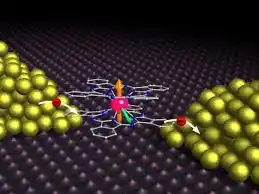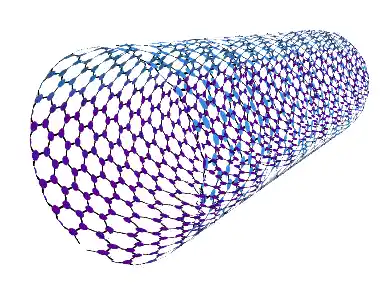افشین رشید
اُستادیار ؛ عضو هیات علمی دانشگاه آزاد اسلامی واحد علوم و تحقیقات تهران
601 یادداشت منتشر شدهThe Process of Simulating Nanotubes interacting for Nano-Communication Purposes by (Electron Nanoparticles)

Note: The source of noise in nanoelectronics is currently mostly in carbon nanotubes based on the nano-communication functions and structure of graphene particles present in nanotubes interacting for nano-communication purposes by (nanoparticles) present in single-walled carbon nanotubes (CNTs) and multi-walled CNTs.
Nanomaterials with high surface-to-volume ratios are very attractive because the noise generated by nanoelectrons is very sensitive to changes in their surface. A representative material of this type is carbon nanotubes, which are rolled sheets of a hexagonal lattice of graphene that are only one carbon atom thick.

Simple nanocommunication devices consist of a carbon nanotube that forms two electrodes. These magnetic communication particles are exposed to various large molecules, causing some of them to bind to the surface of the carbon nanotube. In nanocommunications, different molecules give off unique acoustic signals related to the properties of the molecules. The strength of the interaction between the carbon nanotubes and the molecules is derived from the noise signals. In nanocommunications, the interaction of electronic nanoparticles with carbon nanotubes changes the signal produced by the carbon nanotube device following the absorption of specific single molecules. This is because the absorbing molecule creates a trap state in the carbon nanotube, which causes it to conduct. This means that carbon nanotube-based nanocommunications devices are very sensitive. They can detect an unprecedented amount of single molecules. The ability to characterize single molecules using highly sensitive nanoelectronics is an exciting prospect in the field of sensors, especially for neuroscience and biosensor applications. The use of acoustic signals to detect molecular activity ((interaction) or (active orbital)) is attractive. In nanocommunicators and nanoparticle-based electronic interactions based on carbon nanotubes, the sensitivity of signal detection may be increased by the generation of controllable noise. These nanocommunicator devices based on carbon nanotubes demonstrate the possibility of identifying individual molecules through their unique noise particles in current nanocommunicator signals. Improved knowledge of the molecular origin and nanoparticle-based electronic interactions based on carbon nanotubes noise should lead to the development of electronics that use noise to improve their performance rather than degrade it.
Conclusion:
Noise is a low-frequency random oscillation that occurs in many nanocommunication devices, including nanoelectronics, the environment, and organisms. Noise can obscure signals, so it is often omitted from electronic and radio transmissions.